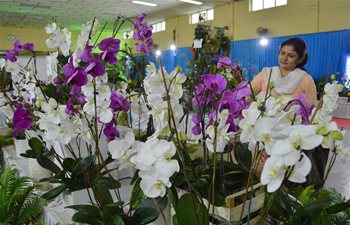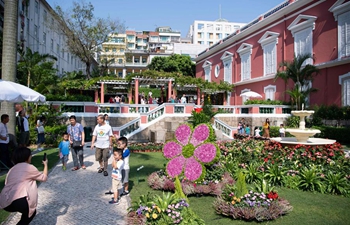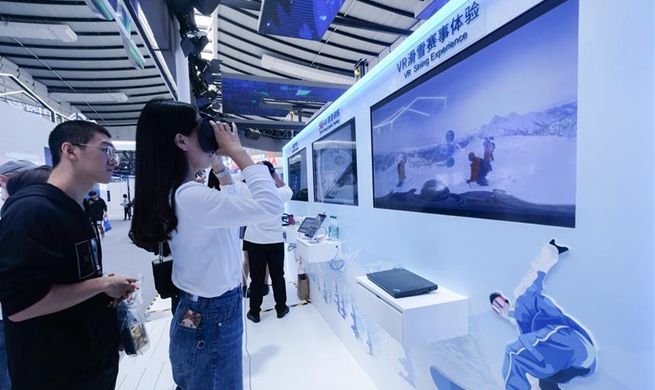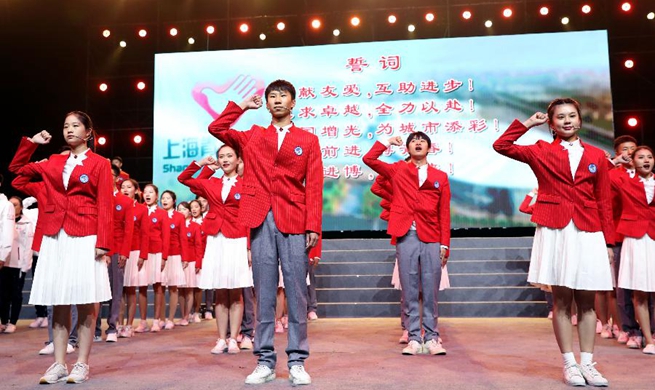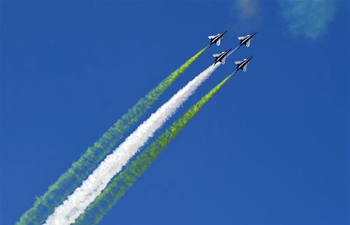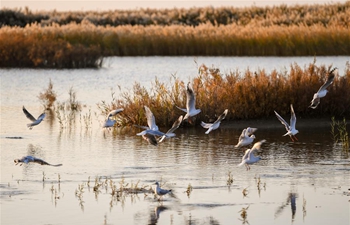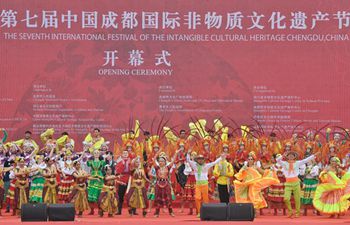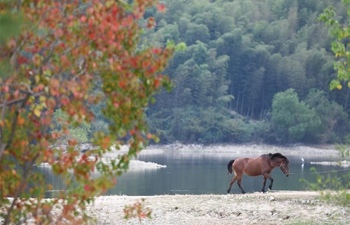BEIJING, Oct. 20 (Xinhua) -- Farmer Gong Guiying, 63, looks at chemical reagents in a laboratory at Nanpi County of Cangzhou City, north China's Hebei Province. She has been providing basic data on soil salt to researchers for 30 years.
"The barren land of my hometown used to suffer from salt in the soil and couldn't grow any worthwhile crops," Gong said.
The soil of Nanpi County had rates of salinity and alkalinity of 30 percent before 1982 when it began modernizing farming and set up an agricultural test base. Researchers came to the county to select salt-resistant crops, safely utilize saline water resources, improve saline-alkali soil and apply the results in crop cultivation.
Now the county has 450 kilograms of wheat yield per mu (about 0.07 hectare) across its 700,000 mu of cropland. In the early 1980s, the yield was less than 100 kilograms.
In the test base, researchers figured out how to turn barren, salty soil into arable land.
China has about 1.5 billion mu of saline-alkali land. In 2013, the Bohai Granary project was launched to increase crop production in salt-affected soil across Hebei, Shandong and Liaoning provinces, and Tianjin Municipality.
The project attracted more than 500 scientific researchers and established 104 test bases, including Nanpi, in 95 counties and cities.
According to the Chinese Academy of Sciences (CAS), China has more than 40 million mu of medium and low-yield fields and 10 million mu of saline soils in the Bohai Bay rim area.
The Bohai Granary project saw crop yield rise by 3 billion kilograms in 2017. It is estimated that crop production within the Bohai Bay rim will rise by 5 billion kilograms a year by 2020.
Exploring grain yield increase in limited arable land is important to China's food security, said Liu Xiaojing, a researcher at the Institute of Genetics and Developmental Biology of the CAS.
The Bohai Granary project has constructed a system to effectively use water resources, select salt-tolerant crops and reclaim saline-alkali soils, as well as developing fertilizers suitable for the saline-alkali soil.
In the last five years, 5.8 million mu saline-alkali land has been rehabilitated around the Bohai Bay rim.
"We do not lack saline water, but fresh water," Liu said. Researchers used brackish water of less than 5 grams of salt per liter to irrigate wheat and increased yield by up to 30 percent compared with no irrigation.
The Bohai Granary project has raised saline water utilization from 8 percent to 20 percent.
Based on this irrigation method, the researchers developed winter wheat cultivars named Xiaoyan 60 and Xiaoyan 81 with high drought and salt resistance.
A grain-growing cooperative was established at a village in Nanpi County in 2010. Cultivating "Xiaoyan 60", the villagers produced 400,000 kg of wheat on 800 mu of saline-alkali land of the cooperative.
The Xiaoyan series seeds have been introduced to saline land in east China's Shandong Province and north China's Tianjin Municipality, said Liu.
Gong Guiying has no plans to retire. She hopes to work with the researchers to improve crop quality as well as quantity.
A saline and alkali ecological grass husbandry belt and a coastal ecological conservation zone are also expected to be created along the Bohai Bay. Enditem





